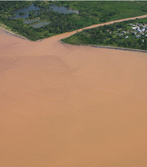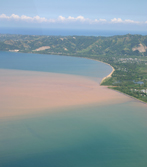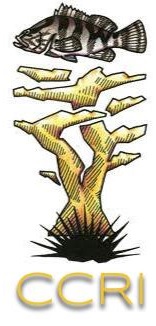
Runoff from coastal development and agriculture increase sediment concentrations in the water, which can threaten the survival of coral ecosystems. High turbidity decreases light penetration and thereby reduces the photosynthesis carried out by zooxanthellae, single celled algae associated with coral tissues. High sediment loads smother corals. Although most corals are capable of removing sediment using mucus trapping and cilia, this process can only handle a limited amount of sediment and the corals expend the energy needed for other processes. Consequently, the nutritional source necessary for their growth, proliferation, and distribution becomes inadequate.

Dredging for beach renourishment, and channel deepening and maintenance can significantly reduce water quality, smother corals and lower productivity of reefs and invertebrates. In Puerto Rico, poorly planned disposal of dredge materials from Arecibo led to the smothering and death of nearby coral reefs. Increased sediment runoff into reef environments results from accelerating development, the plowing of unpaved roads, and poor land management. Most water resources development projects have had a negative impact on coastal wetlands and seagrass habitats that act as natural filters for the transport of materials to coral reefs. Coral reefs located near Mayaguez and Ponce have experienced significant degradation due to the history of coastal development in these cities. Many of these projects have been permitted due to a lack of information by the developers of the project, few personnel available to inspect and monitor sites, a lack of enforcement towards ensuring adequate stormwater and erosion controls, and the inadequacy of control measures for the protection of coastal ecosystems. However, endeavors are currently in progress to better understand the causes and effects of land-based activities on coastal ecosystems and the development of effective management strategies.
The loss of coral reefs within the inner shelf are mainly attributed to dredging, navigation and docking activities for large ship traffic within bays, discharge of primary sewage, and past organic discharges from local tuna factories. River discharge of sediments is significantly increased where development or land-clearing agricultural activities occur in upstream watersheds. Large rain events can easily mobilize sediments, and the channeling of rivers accelerates their delivery to reef environments
